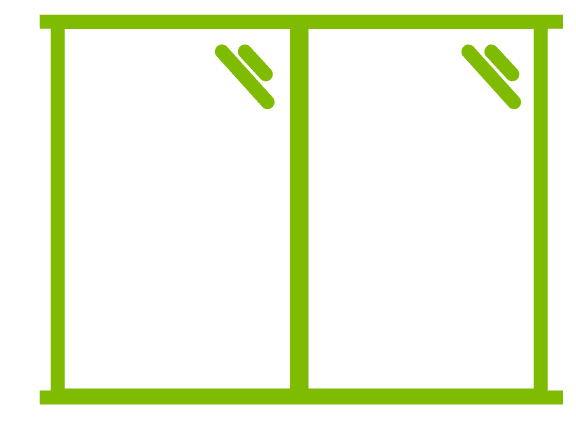Air ventilation is an important element of every building design. It’s the controlled exchange of fresh outdoor air and stale indoor air to reduce moisture and odors while keeping occupants comfortable inside. Your building’s HVAC system and vent fans regulate this exchange — but when your building has air leaks, too much outdoor air is sneaking in.
A well-constructed building envelope should keep unwanted water and air out. However, it’s almost impossible to eliminate every air leak in commercial buildings. Large leaks or a lot of smaller leaks can significantly impact a building’s energy efficiency, durability, and safety.
Air barrier testing (or blower door testing) is a diagnostic tool to determine your building’s airtightness — and it’s useful in helping you decide whether you need to take steps to close unintended openings to the outside. If you have a commercial building, it’s time to learn more about the steps of blower door testing.
Why commercial building airtightness matters
Next to water leakage, air leakage is one of the biggest problems that commercial building managers face. Air leakage occurs when outdoor air finds ways into your building through small cracks or other openings in the building envelope.
Excessive air infiltration is a top cause of high utility bills and below-average performance of building systems like heating and air conditioning. Air leaks also invite water leaks, which increases the risk of rot, mold, and structural damage. Most importantly, air infiltration could negatively affect the health and safety of the building’s occupants.
On the other hand, airtight commercial buildings are better-protected from the elements. HVAC systems run more efficiently, and building managers often find that utility bills and maintenance needs are lower.
When to get a blower door test
Blower door testing is a simple way to find out how airtight your commercial building is. The results can be used to make safety and energy efficiency improvements, whether the building is existing or it’s currently under construction.
Air barrier testing is an important part of the commercial inspection process step in new building construction. Building Envelope Allies helps building owners meet ASTM air barrier testing standards, including ASTM E1827 and ASTM E779.
You can have a blower door test done at any time, particularly if you suspect your building has an air leakage problem. Getting an air barrier test helps you learn where to make improvements on existing structures to increase energy efficiency and lower utility bills.
How blower door testing for commercial buildings works
Building Envelope Allies provides blower door testing for commercial buildings and residential homes across the United States. Our technicians have done thousands of blower door tests over the last 30 years, and we’re here to guide you through the process.
Preparing the building for blower door testing
Building Envelope Allies technicians start by preparing your building for testing. We turn off HVAC systems and any ventilation fans, such as bathroom fans. We ensure all windows, exterior doors, and other intentional openings are closed. Interior doors are propped open to ensure all rooms are included in the test.
Next, our technicians set up the blower door. We mount calibrated fans in one or more exterior doorways, and seal the opening around the fans. Hoses and gauges are set up inside, outside, and in the fan to measure airflow during the blower door test.
Testing the building for air leakage
We turn the fans on and they pull air out of the building to depressurize it. As the air is removed, it’s naturally replaced with outdoor air that’s brought in through holes, cracks, and other leaks in the building envelope.
While the fans are on, our technicians monitor the computerized fans, which measure airflow and pressure. They use this data in combination with details about your building, like volume and dimensions, to determine the size of the air leaks.
We may also use infrared cameras and theatrical smoke or fog to identify the location of air leaks during testing. Thermal envelope evaluation is conducted in accordance with ASTM C1060 standards.
Receiving your blower door test results
After your blower door test is complete, our technicians give you the results in a graphic report. The most common measurements included are air changes per hour (ACH) and cubic feet per minute (CFM).
You can expect to learn how much air is moving through your building through those unintended leaks, but the numbers can be confusing. We help you understand what the results mean for your building by comparing the results to those of similar buildings.
Air barrier testing identifies air leaks that could be compromising your building and gives you the knowledge to make improvements. Is it time to schedule a blower door test for your commercial building? Request an air barrier testing quote online now.







